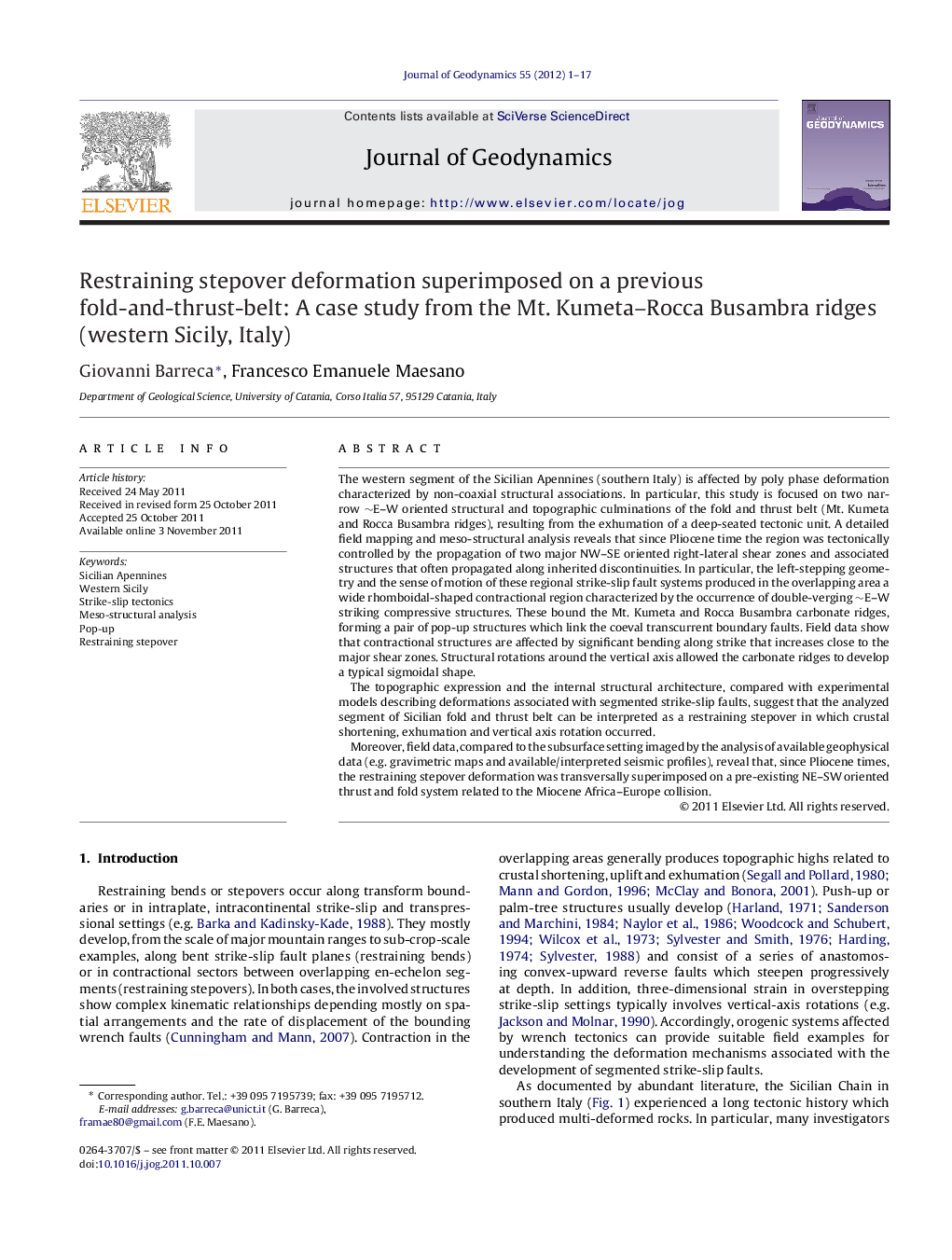| کد مقاله | کد نشریه | سال انتشار | مقاله انگلیسی | نسخه تمام متن |
|---|---|---|---|---|
| 4688394 | 1635792 | 2012 | 17 صفحه PDF | دانلود رایگان |

The western segment of the Sicilian Apennines (southern Italy) is affected by poly phase deformation characterized by non-coaxial structural associations. In particular, this study is focused on two narrow ∼E–W oriented structural and topographic culminations of the fold and thrust belt (Mt. Kumeta and Rocca Busambra ridges), resulting from the exhumation of a deep-seated tectonic unit. A detailed field mapping and meso-structural analysis reveals that since Pliocene time the region was tectonically controlled by the propagation of two major NW–SE oriented right-lateral shear zones and associated structures that often propagated along inherited discontinuities. In particular, the left-stepping geometry and the sense of motion of these regional strike-slip fault systems produced in the overlapping area a wide rhomboidal-shaped contractional region characterized by the occurrence of double-verging ∼E–W striking compressive structures. These bound the Mt. Kumeta and Rocca Busambra carbonate ridges, forming a pair of pop-up structures which link the coeval transcurrent boundary faults. Field data show that contractional structures are affected by significant bending along strike that increases close to the major shear zones. Structural rotations around the vertical axis allowed the carbonate ridges to develop a typical sigmoidal shape.The topographic expression and the internal structural architecture, compared with experimental models describing deformations associated with segmented strike-slip faults, suggest that the analyzed segment of Sicilian fold and thrust belt can be interpreted as a restraining stepover in which crustal shortening, exhumation and vertical axis rotation occurred.Moreover, field data, compared to the subsurface setting imaged by the analysis of available geophysical data (e.g. gravimetric maps and available/interpreted seismic profiles), reveal that, since Pliocene times, the restraining stepover deformation was transversally superimposed on a pre-existing NE–SW oriented thrust and fold system related to the Miocene Africa–Europe collision.
► We analyze deformations that occurred in a contest of segmented regional strike slip fault.
► We examine structural data to constrain fault kinematics.
► The studied region is interpreted as restraining stepover.
► The nucleation of restraining is accompanied by passive structural rotation.
► Natural stepover was compared with analogue models.
Journal: Journal of Geodynamics - Volume 55, April 2012, Pages 1–17